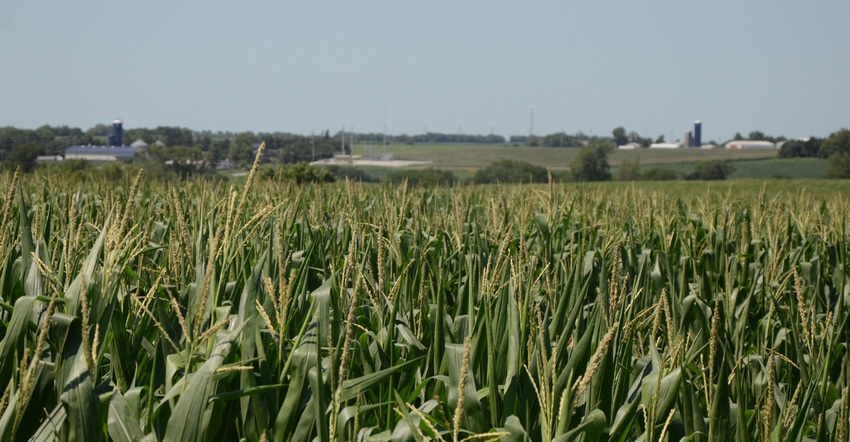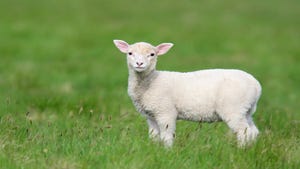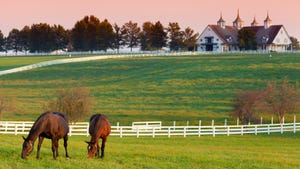
While most people who grew up on a farm are thankful for the experience, fewer and fewer people have had the opportunity over time. As Steve Bohr notes, it begs the question: Why would you ever stop farming? "Ultimately," Bohr says, "death is what forces us to transition."
Bohr, a financial adviser and co-owner of Farm Financial Strategies Inc., discussed land transition and maintaining farm legacies at a recent spring seminar held by the Iowa chapters of the American Society of Farm Managers and Rural Appraisers, and the Realtors Land Institute.
Bohr notes that with 30.6 million acres in Iowa valued at an average of $7,559 per acre, according to Iowa State University's 2020 land value survey, there's about $231 billion in market capitalization in Iowa — a drop from $266 billion in market capitalization in 2013.
Why does that value matter? Bohr points to the age demographic that owns the land.
"Statistically, 25% of our land is owned by people 55 to 64, 26% by people 65 to 74, and 34% — astoundingly — is owned by those who are 75 years and older. That's significant when you say 85% is owned by those who are 55 years and older," he says. "In each county in Iowa, there are about 300,000 acres. If you figure 34%, which is about a third, about 100,000 acres [in each county] are owned by people 75 years and older."
This is a scary prospect, Bohr points out, considering the massive transfer of land in the next ten to twenty years — roughly 100,000 acres in each county will change hands in that time. With 60% of the land owned by people ages 65 and older, two-thirds will transition in the next 20 years.
Another challenge is the cash flow needed to acquire or reacquire land. Bohr gave an example of a 400-acre farm at an average price of $9,000 per acre, or $3.6 million. Divided among four heirs, and with a 25% family discount, the on-farm heir would need to come up with about $5,062 an acre to buy the farm from their heirs — which might sound good, before realizing that with a 20-year loan at 5% or 6% interest, there's a 10% cash flow payment of a little over $500 per acre per year.
Farm transition strategies
That's why Bohr says it's better to start planning a farm transition sooner than later. He outlined several strategies to aid in successful farm transitions.
Bohr notes that farms are often inherited in two ways: where the farming heir inherits it all, and the estate plan is designed to be fair to nonfarming children; or the farm is divided up equally.
However, a third option is to create a family entity, a partnership or an LLC, to own the land as a family and provide an opportunity for those in the family to rent the ground on family terms.
"Over time, family members will fall off. They'll want to sell, but we have to have rules that allow the others to buy it back under family terms," Bohr says. "The usual Plan B is to create a family land entity to create rules to lease and purchase. We might go two generations before anyone wants to sell. We have to have a plan to keep it together, and let a family member buy it under family terms. I call that the 'boomerang plan.'"
It's also worth considering selling a farm on a contract.
"Selling on a contract, recognizing capital gains and stretching them on the contract is favorable compared to recognizing them all at death," Bohr says. "We can use an AFR [Applicable Federal Rate] interest rate as low as 1.9% to as high as I want to tailor it from cash-flow perspective for the seller, and to make it affordable to the buyer. We can tailor the number of years, and I can price it at any price as long as it's no more than $11.7 million [the current federal gift-tax exemption level]."
A footprint lease is another option for situations where a grower owns a structure, like a grain bin, on a parcel of land owned by someone else.
"For example, someone builds a building on Dad's land, which works until Dad dies and now everybody in the family owns the land," Bohr says. "As the owner of the structure, I want a footprint lease for the life of the structure, so I don't have to worry about somebody else owning the land."
Entrance vs. exit strategies
Bohr encourages growers to think about entrance strategies rather than exit strategies.
"I'm trying to get the next generation into the business. I'm not trying to kick my dad out of the business," he says. "Dad does not want to talk about an exit strategy because that means he's worthless, and he's close to dying. So we want to talk about how we can enhance the operation by entrance strategies rather than exit strategies."
One strategy is to separate long-term assets and short-term assets — and start the transition of the short-term assets now, and long-term assets later. Short-term and medium-term assets are operating assets, like machinery, livestock, and grain. Operating assets involve work — and work is what's being passed on to the next generation. In addition, these assets are much less capital-intensive than land.
"There are lots of families who have everything all thrown together. That means you almost have to transition it all at the same time. One of our strategies is to try and undo that situation, and have the operating assets in one entity and have the land separate," Bohr says. "The land is something that's going to provide long-term income for me and all my family members; we may want all of our children to own the land, but not all of the operating assets."
"I think [this is] a real leadership opportunity to replace ourselves," Bohr says. "If you've got a bucket of water, you put your hand in and pull your hand out, there's not a hole there. We all have to realize that's our life at some point in time. People come to your funeral and they'll cry, but life's going to go on without you. We'd better find a way to do it while you're alive if we can."
About the Author(s)
You May Also Like






